Layout rules
Remember the main principles of drawing up a plan for a summer cottage:
- Before starting any work, analyze the suburban area for the depth of groundwater, soil type, height difference, direction of sunlight and wind. Often it is these parameters, and not the shape or size, that become the main ones when developing a landscape project. Living areas, for example, should not be located in a low-lying area, especially if residential water accumulates there. But a damp corner can be beaten with a decorative pond.
- Decide on the main function of a suburban area: if the garden is most important, then the most inappropriate place for growing plants is assigned to the house. Do you want to relax? Designate the best spot for a seating area.
- The layout of the garden plot assumes a rational distribution of functional areas. 30% of the land plot is allocated for a residential building and outbuildings, ~ 20% is occupied by a recreation area with barbecue area, a playground, the remaining 50% are cultivated for beds, trees or shrubs are planted.
- The climatic conditions of the region determine the need for shading: in terms of your summer cottage in the south, plant tall fruit trees near the house and gazebo to create a pleasant coolness. In the north, on the contrary - you should not block the sun, the trees are shifted to fence further from home. The position of the sun also matters - if it bakes most of the day, you will need awnings, umbrellas and other protective screens.
- If the family has small children, think over the location of the playground in advance - you should see the kids from all the main places of stay (veranda, living room, recreation area).
- Observe construction standards on your site: maintain fire-prevention distances from streets to buildings (residential building - 3 m, shed - 4 m, trees - 2-4 m), as well as sanitary requirements for the location of the restroom - 12 m from the facade of the house, 8 m from wells, 8 m from the bath, shower.
- The location of the house depends on many factors, but the main thing is not to push it deep into the site. Place closer to the parking lot, while on the same side as the neighbors - this is necessary for fire safety purposes.
What should be on the site?
We have already mentioned that the ideal summer cottage is different for everyone: the size, number and composition of elements depends on the size of the site, the composition of the living family, and functional purpose.
Main buildings:
- House... The larger the suburban area, the larger the building you can afford. Maximum for 6 ares - 60 sq.m., for 12 ares - 120 sq.m. respectively. At the same time, take into account the purpose of the construction: for a day stay, a small summer house is enough, for overnight stays and winter leisure, you will have to erect a capital building with electricity, water, sewage and other amenities.
- Garage... Its modification can also be different: an ordinary asphalt site in a small area, a shed near the house, if sun protection is required. Or a full-fledged indoor warm enclosure for a car, if you plan to use the summer cottage in the winter or do self-repair of vehicles.
- Barn... This type of outbuilding is needed on every site: it usually stores working tools, but even if you do not plan to cultivate the land, you need a place for winter storage of a grill, barbecue, sun loungers and other attributes of a recreation area.
In the photo there is a lounge area near the house
The placement of additional buildings depends on your needs and the size of the land plot: bath or sauna, shower room, cattle paddock, workshop, grill house.
The location of the toilet depends on the supplied communications - a full-fledged sewer is laid during the construction of the house. A house with a cesspool is located at a distance of 8-10 meters from residential buildings, preferably taking into account the direction of the wind.
In addition to buildings, do not forget about a place for a garden and a vegetable garden: in this part there are fruit trees and shrubs, beds, flower beds, greenhouses and garden tools... Use the area as efficiently as possible: to save space in a small area, for example, you can build racks and use the system vertical cultivation.
Trees, if they are not needed for zoning or creating shade, move them to the fence - tall ones will serve as an additional partition from road noise and dust or nosy neighbors.
On an area of 10 acres or more, in addition to the classic set of a house, a barbecue area and a bath, you can afford a pool, an artificial pond or other water feature.
Pictured is a garden design with a pond
Zoning guidelines
Designing a summer cottage should solve the problem not only what and how much, but also how to arrange each piece of the puzzle. In order for the picture to "come together", it is required to divide the suburban area into zones, separating some of them from each other.
First zone - front or entrance... As the name suggests, this is a place near a gate or a wicket. Here it is worth considering a convenient entrance, a separate entrance for pedestrians (so as not to open the gate again), parking the car and laying paths to all the necessary places - a house, a toilet, a recreation area, a bathhouse.
Important! Protect the outdoor parking lot with green spaces that will trap exhaust gases and prevent them from reaching the resting place.
In the photo, zoning with plant partitions
Living sector includes the house and the adjacent territory. There is a veranda near the hut, which often plays the role of summer kitchen and a dining room.
The next area is place to rest... It includes a gazebo, terrace or grill house, barbecue, dining table. Additional accessories - various stoves and tandoors, a working kitchen island, a storage space for dishes, a wood log. Choose the side of the site so that smoke does not enter the house or playground. At the same time, the recreation area should be planned according to the principle of the best view: during friendly or family evenings, you want to contemplate the beautiful landscape. A canopy or tall trees will protect you from sunlight.
In the photo there is a spacious area with tall trees
Garden needs separation from other territories: when developing landscape design, plan a landing hedge or use another interesting idea to mark the boundaries of the site. As for the cardinal points, choose a bright, but not too hot area - southwest or southeast is just right. On the north side, the seedlings simply won't grow and bear fruit.
Economic territory usually unsightly, so it makes sense to hide it from prying eyes, pushing it away from the front door. They hide an important, but not very beautiful area with a barn, a greenhouse and other necessary details, also behind a hedge.Low neat bushes are not enough - it is better to place trellises, trellises or supports and plant a large number of decorative climbing plants... Make sure the flooring is level, ditch the lawn in favor of paving stones or cement.
But in play area the lawn will come in handy: it will ensure safety during children's entertainment. Depending on the landscape, it is appropriate to replace the lawn grass with sand. When drawing up the layout of the site, this territory is left as open as possible for review so that adults can follow the kids. In this case, you need to put a fungus or make a canopy so that children do not get sunstroke.
Planning nuances for plots of various shapes
The breakdown of the backyard area into separate zones depends on the shape of the suburban area itself.
Rectangular section
It occurs most often, does not cause difficulties in planning, and is considered the best option. The house is located near the entrance, a garage or carport is also installed here. Next, the front garden is broken up - as a transitional zone between the residential and the garden. Behind the house is a place for technical buildings. Closer to the front door, a recreation area is laid out, in the remaining part - a vegetable garden and fruit trees.
In the photo, the design of a rectangular allotment
Square plot
Despite the correctness of the shape, the square is one of the most inconvenient for planning the site. We propose to resort to the classic breakdown option: visually divide the territory into 2 equal parts - one near, the other distant. The one that is closer to the front area is again divided by 2, but across, not along. In one of these neighboring quarters there is a house, in the other - a garage and a utility block (if there is enough space). Behind them they set up a garden, equip a recreation area.
In the photo, the location of all zones on the square
Long and narrow section
Fortunately, it is much easier to think over the layout of an elongated summer cottage than to design a narrow room.
Each zone here occupies an area from fence to fence, while they are located from the most important and beautiful, to the most rarely used and ugly. The closest to the entrance group is the residential area, then a place for games and a barbecue area, after a vegetable garden, in the very distance they leave an economic area.
In the photo, an elongated backyard
Non-standard form
Usually the irregular shape is a p-, t- or l-shaped allotment. It is lucky if the soil is flat, but sometimes complex geometry is complicated by elevation differences.
- L-shaped... Choose the widest and shortest part for the construction.
- T-shaped... When planning a site, the upper part is occupied by a house, the elongated one is left for other buildings.
- U-shaped... As with the previous one, the house is placed on a lintel, two elongated lines are used for the rest of the zones.
The advantage of the corner location - the hidden corner can be equipped as a cozy recreation area or the utility block can be hidden in it. And the parallel lines of the letter P will successfully separate territories that are not suitable for each other: make beds on one side and put a shed, use the other for installing a barbecue, playground, gazebo, pool.
Besides square or rectangular, there are also triangular and even circular areas! They are considered the most difficult to plan. You cannot place a house in the center on a round or oval one - it will be impossible to divide the area around it correctly. Any of these forms is designed asymmetrically: if you are a beginner in landscape design, it is better to entrust this work to professionals.
In the photo there is a non-standard layout with a swimming pool
Real-life examples of layouts
The site plan is drawn up in accordance with the dimensions, relief and other features. But there are also universal options suitable for a variety of source data.
A classic example - a house and a bathhouse (or grillhouse) are placed on one side in the corners, and between them they place a play area with swings and playgrounds, or organize a spa with a cedar barrel, a pool or a jacuzzi. To highlight the zones and combine them into one whole - make the flooring and paths from the same contrasting material. For example, in photo # 3, a white stone is used in combination with lush grass.
Another idea for planning a summer cottage is to equip a house and a playground on one side, and on the opposite side, place a recreation area, play, technical (photo # 2). In the center - a vegetable garden with seedlings or beautiful multi-tiered flower beds... Remember to draw up a diagram, run electricity and arrange lighting in all the necessary parts of your garden.
In the first photo, they abandoned numerous plantings, limiting themselves to small individual bushes, trees, flower beds. The main part of the land is covered with granite - it is not as comfortable as a lawn, but it guarantees cleanliness in the summer cottage even on a rainy day. There are two recreation areas - both are located behind the house. Closer - a dining table with barbecue, further - chairs for sunbathing.
You will find other layout options for square, rectangular and even irregular plots in the gallery.
On the picture track light stone
Photo gallery
Take care of your comfort in advance: make the layout of the suburban area correctly so that it is not only beautiful, but also ergonomic.

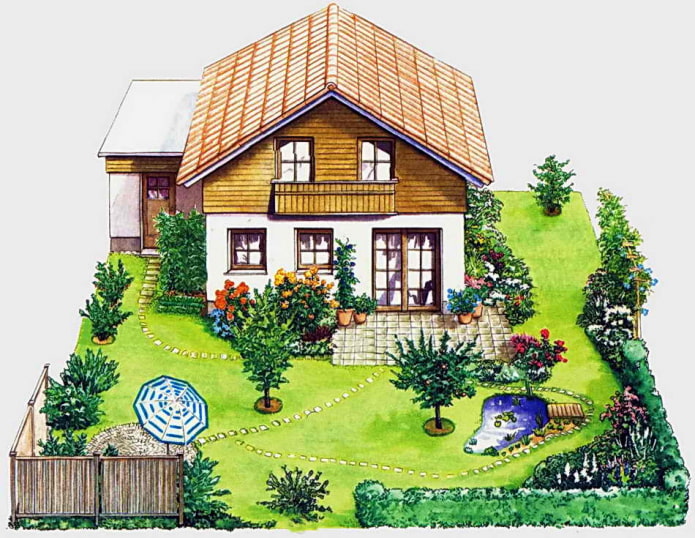
 10 practical tips for arranging a small kitchen in the country
10 practical tips for arranging a small kitchen in the country
 12 simple ideas for a small garden that will make it visually spacious
12 simple ideas for a small garden that will make it visually spacious
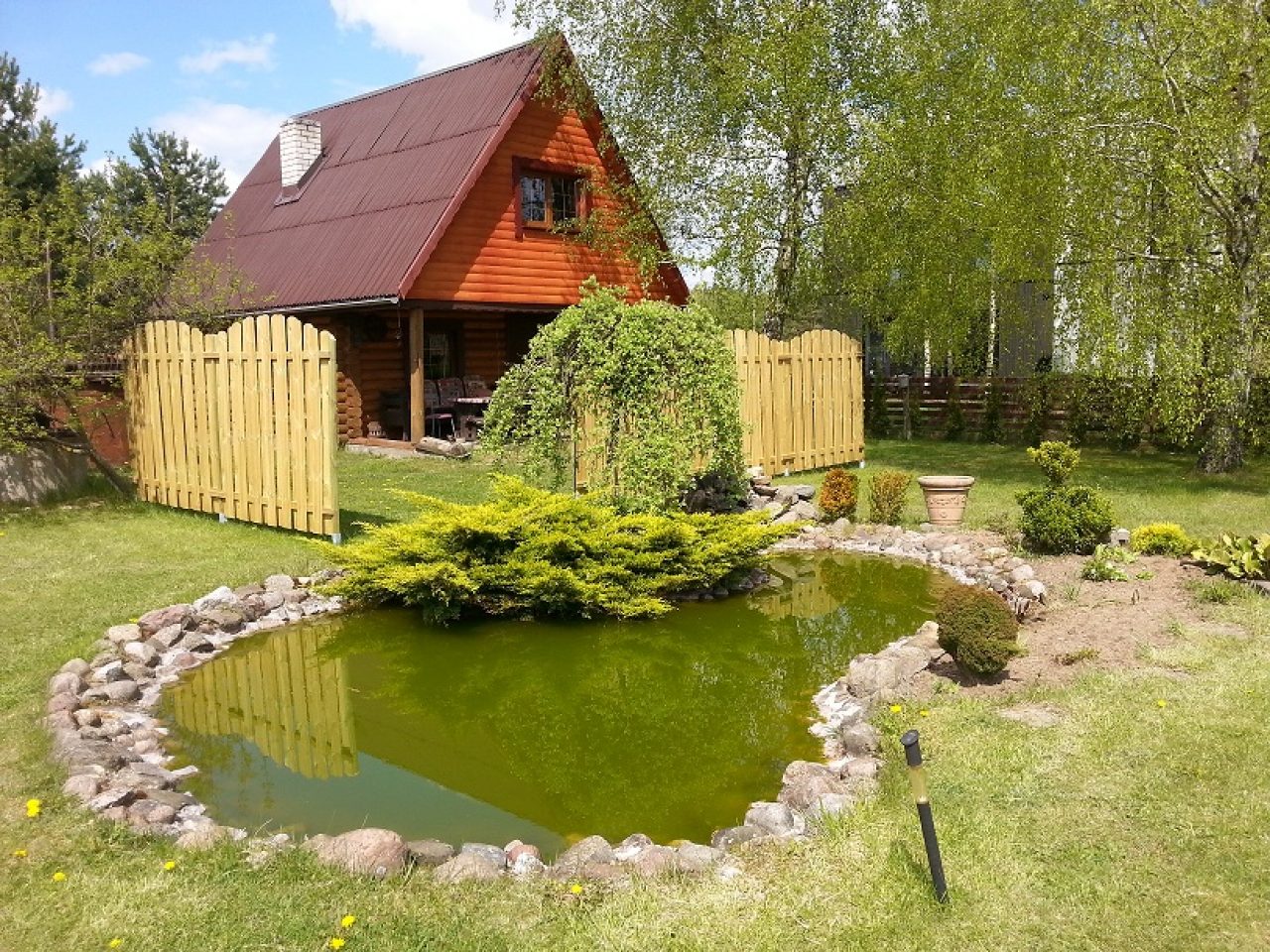
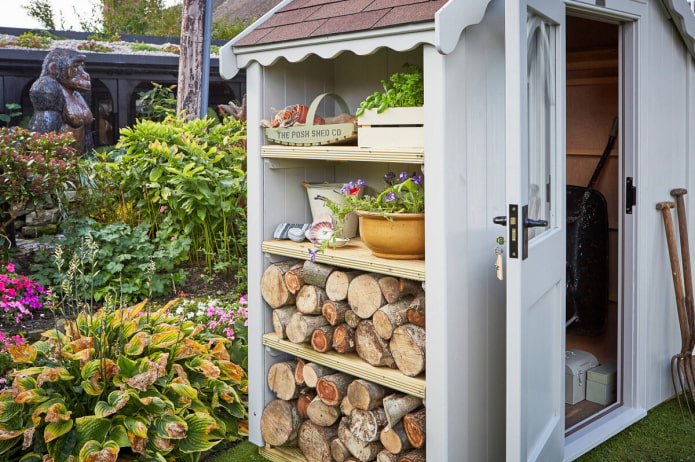



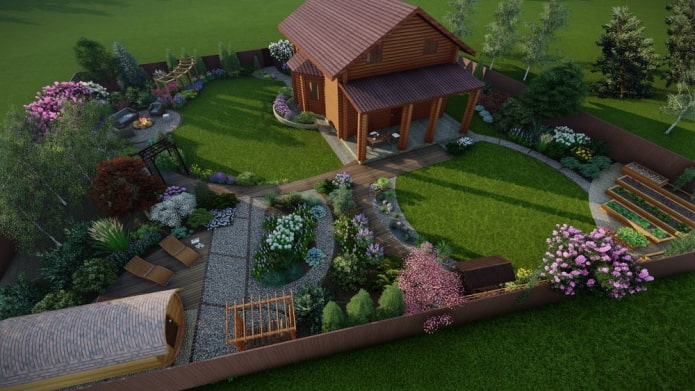
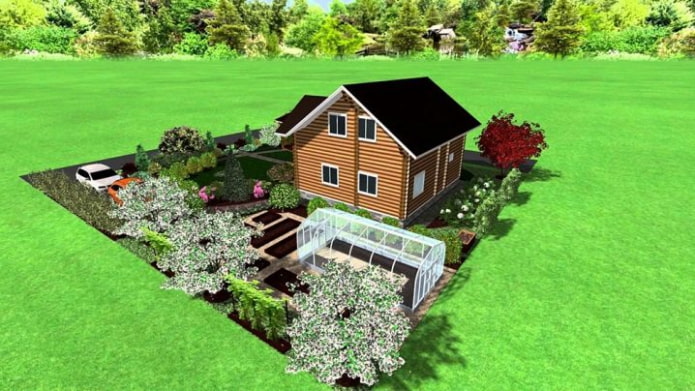
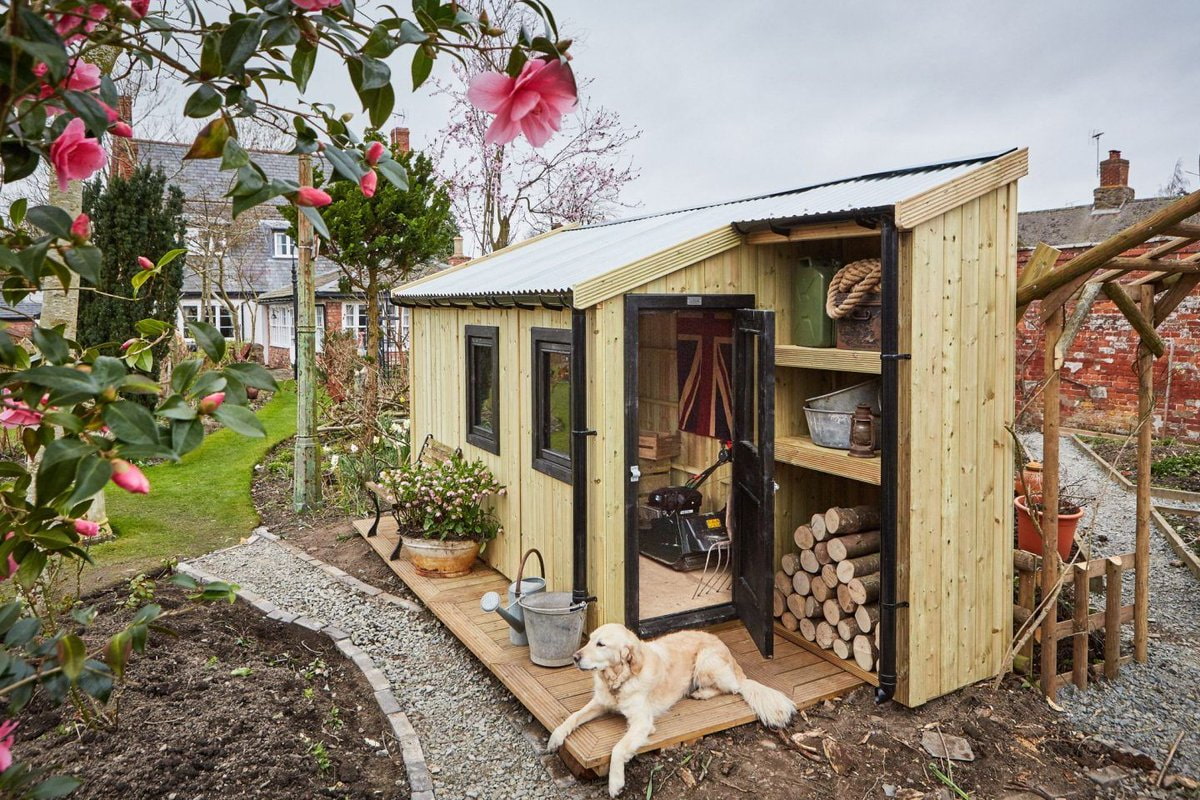
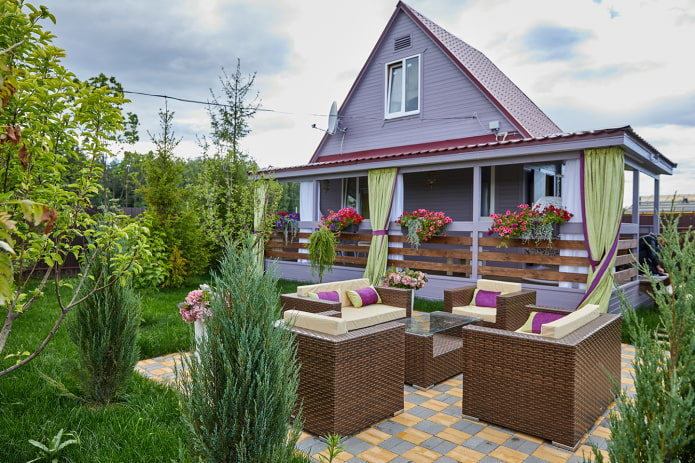
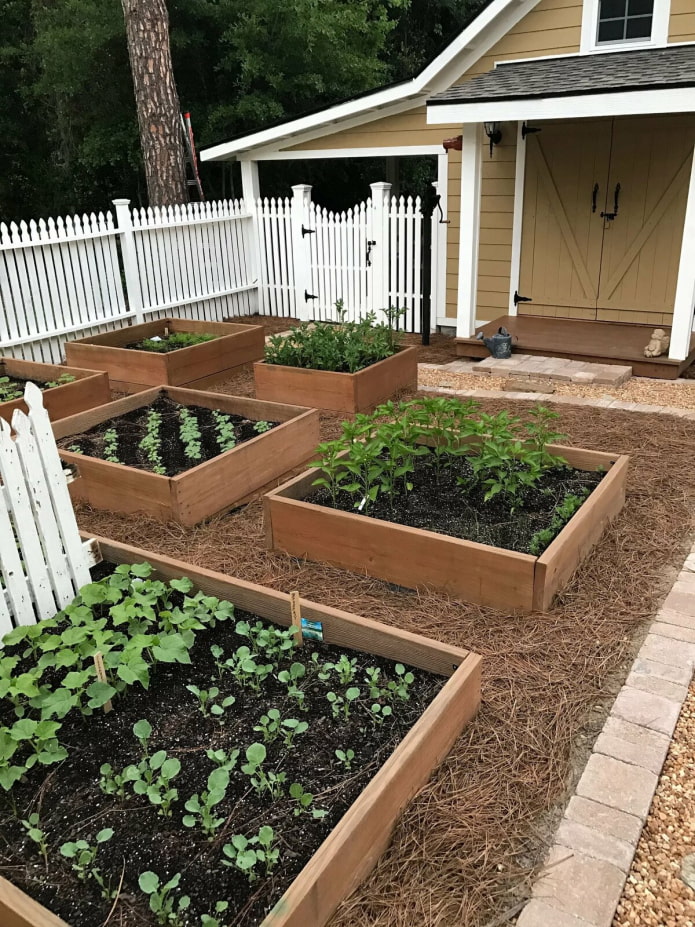

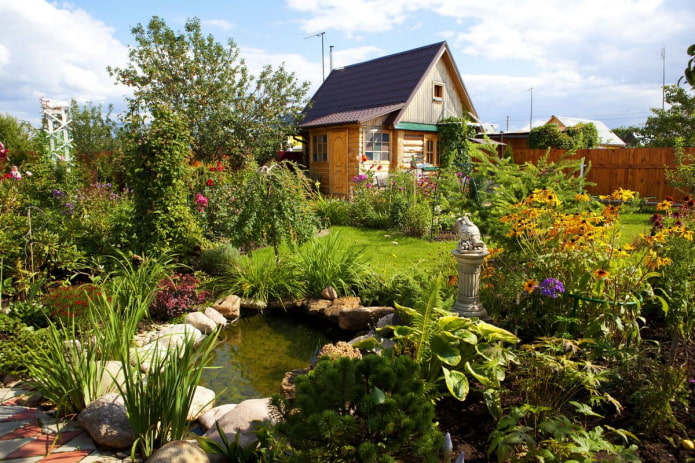
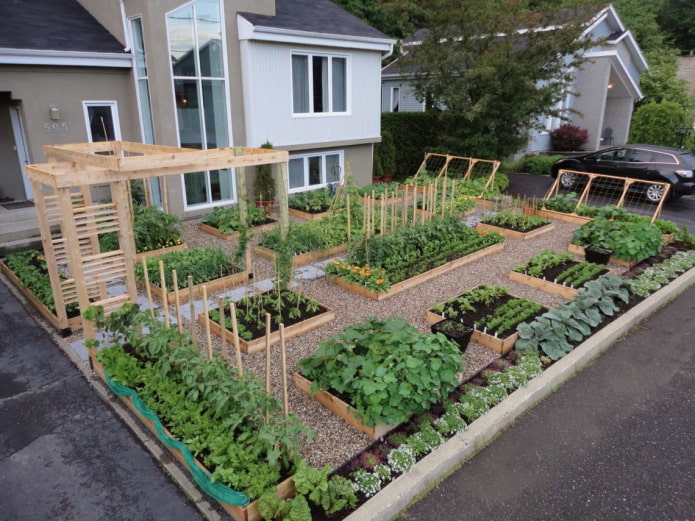

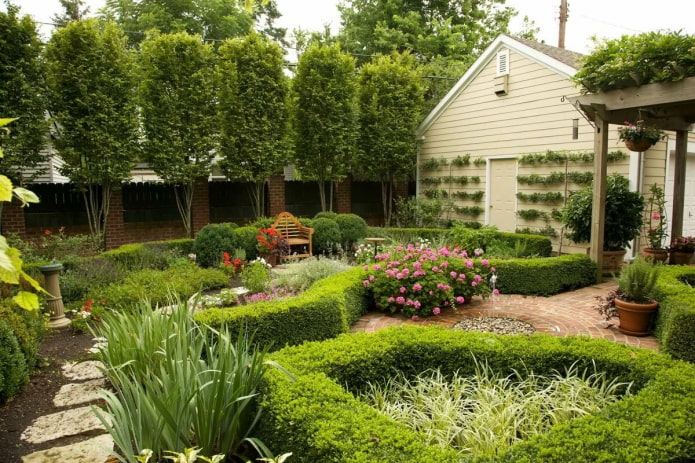
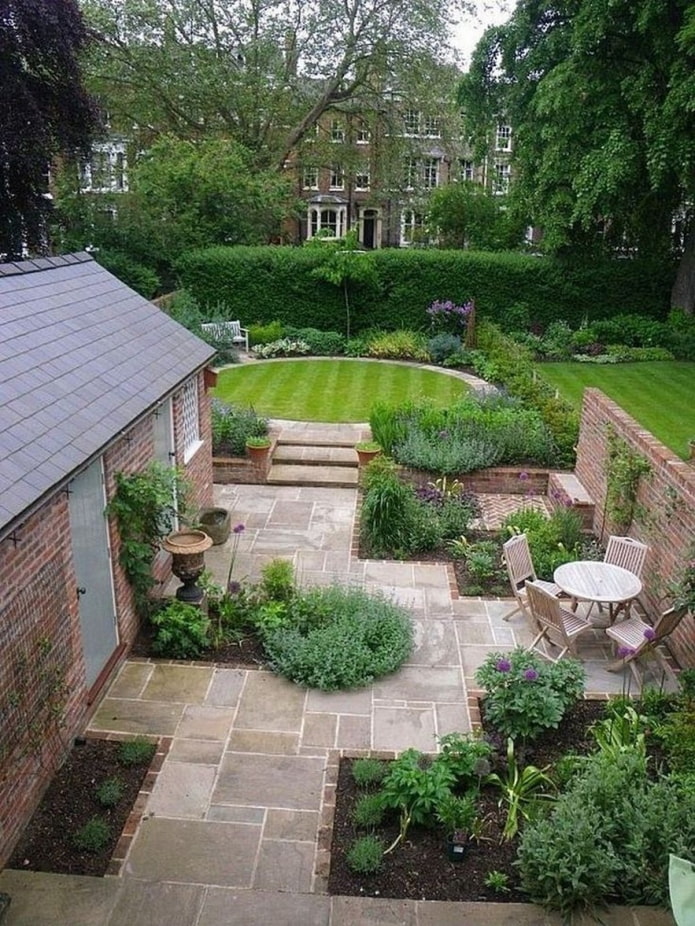
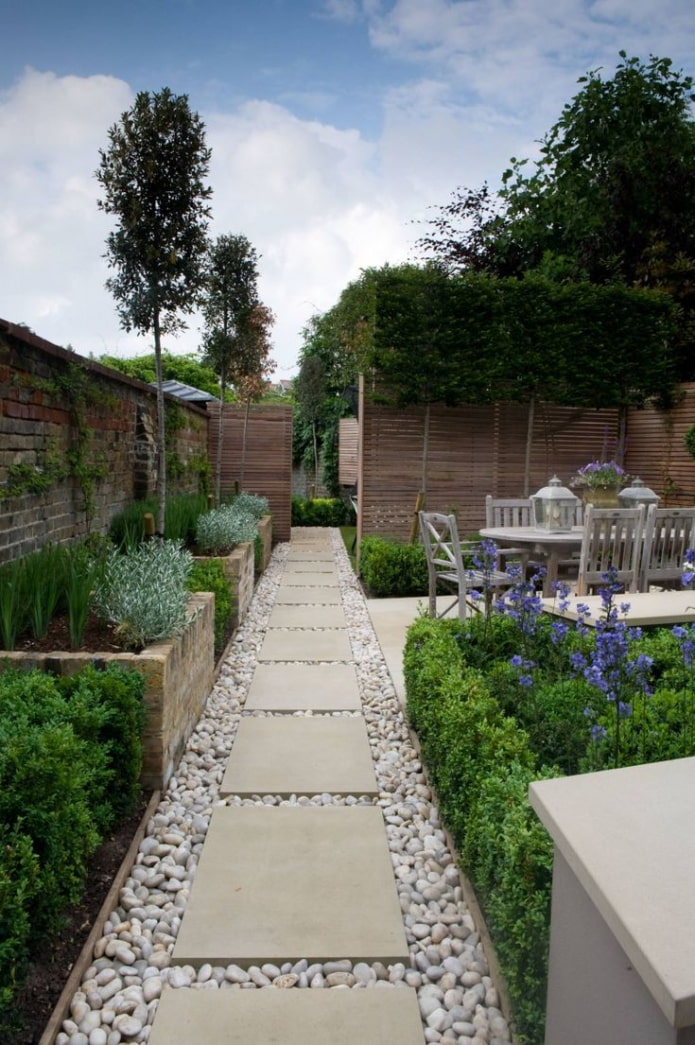

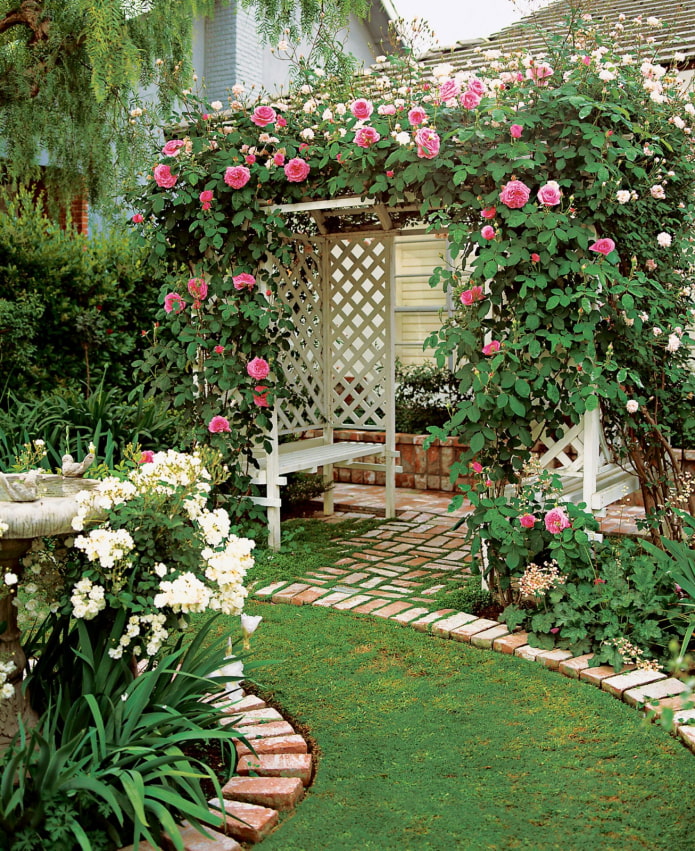
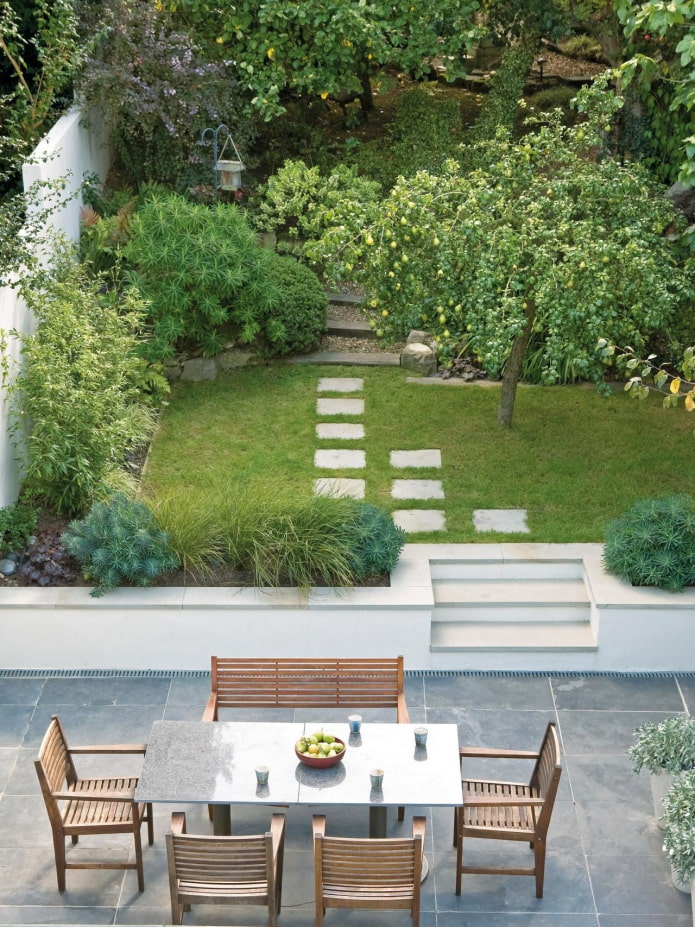
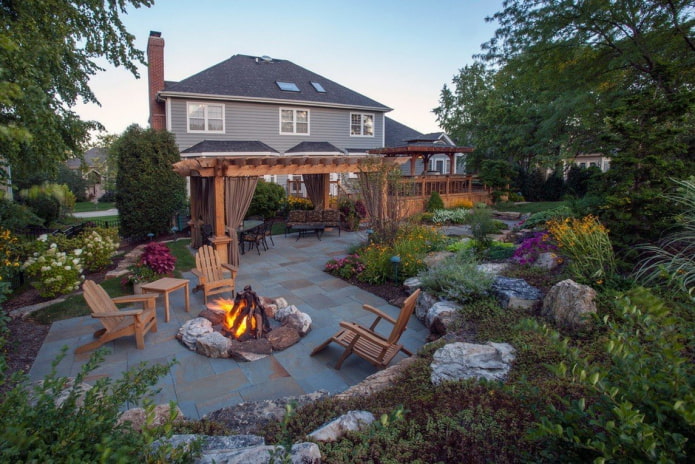
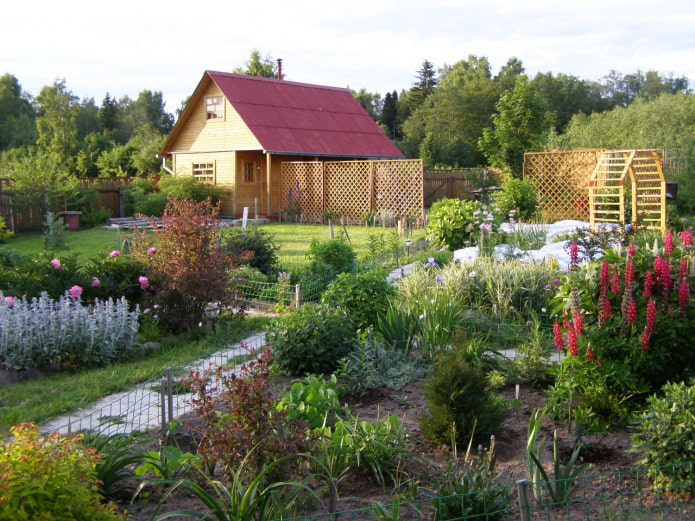
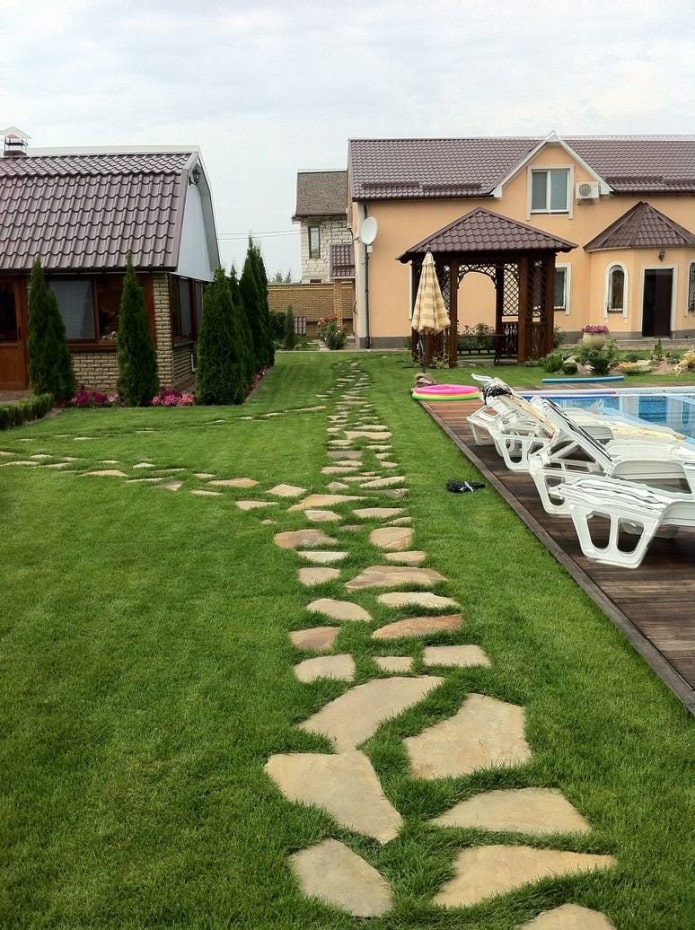
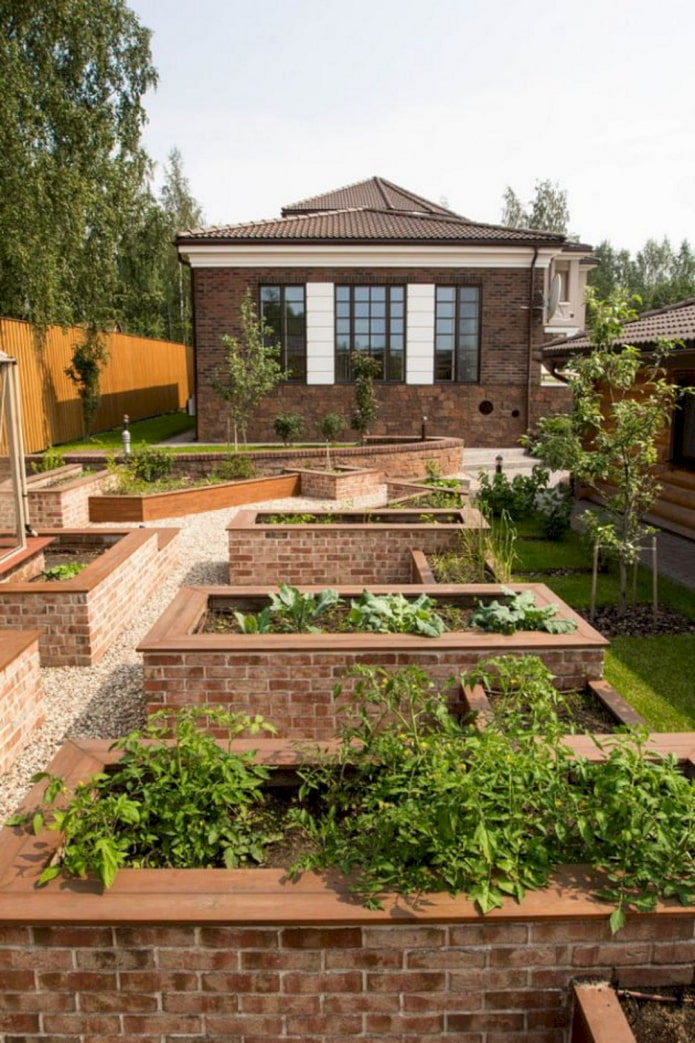
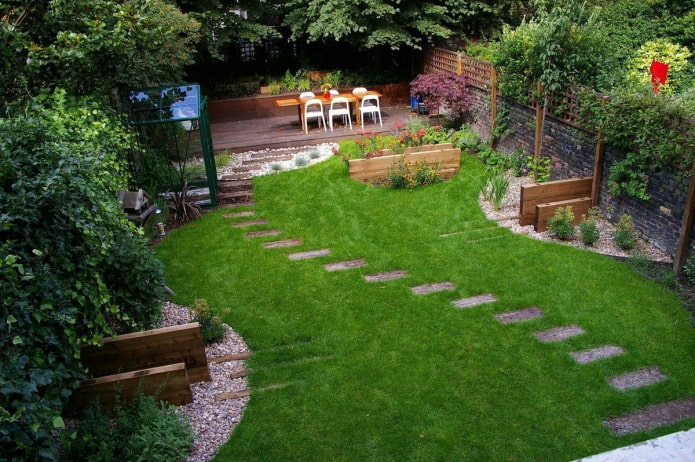

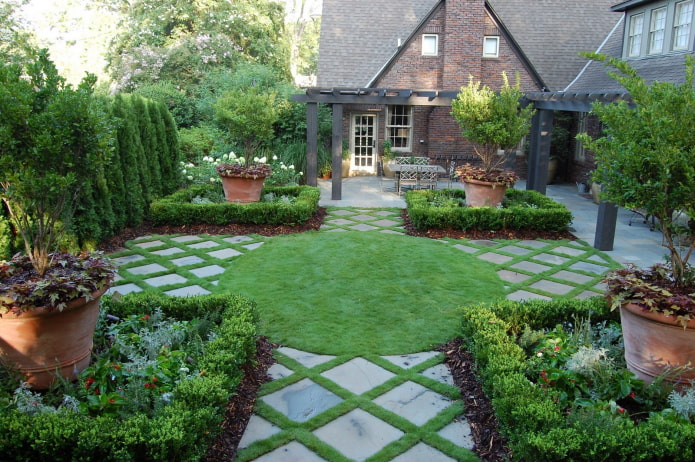
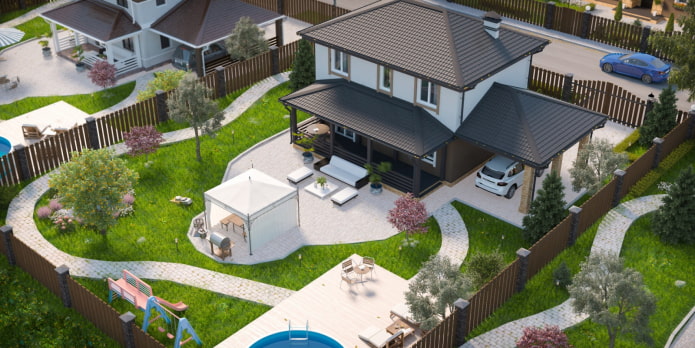
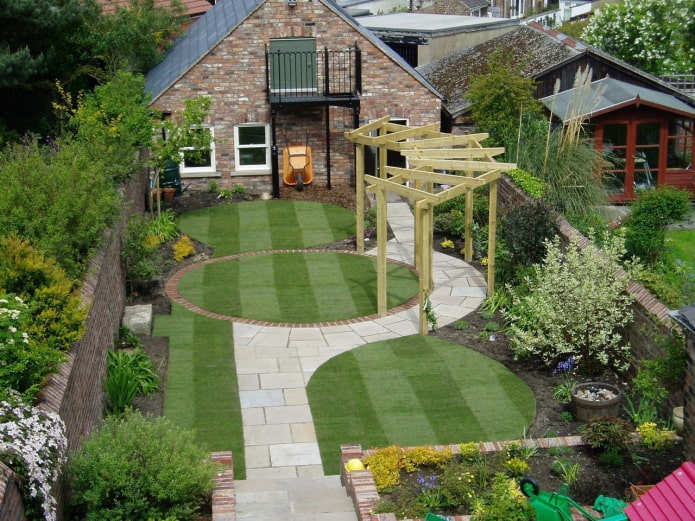

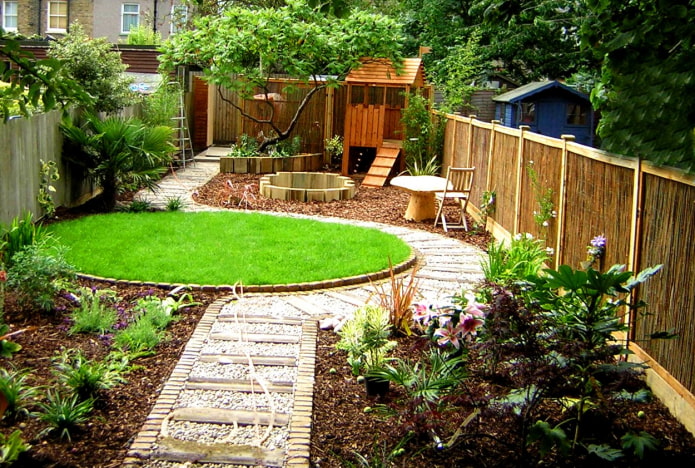
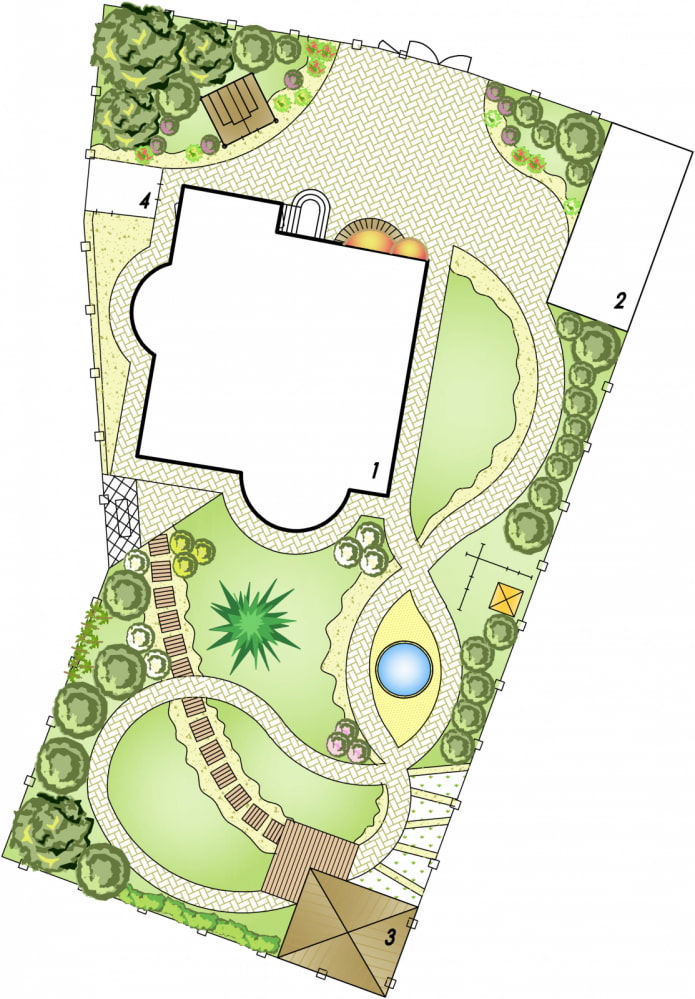
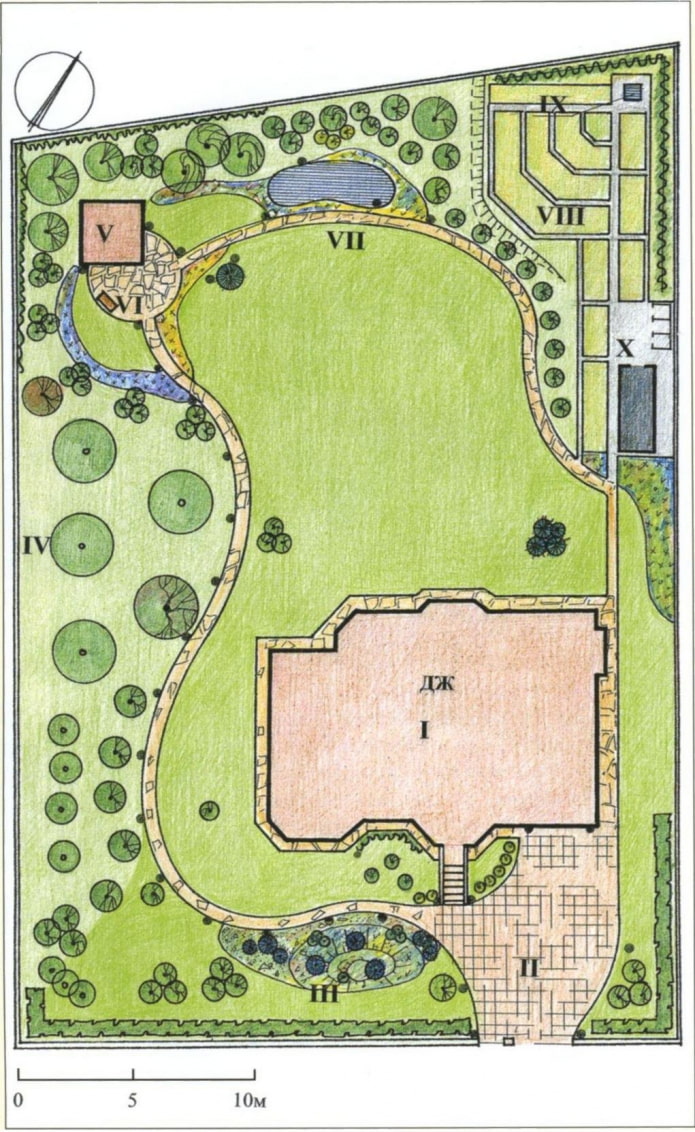
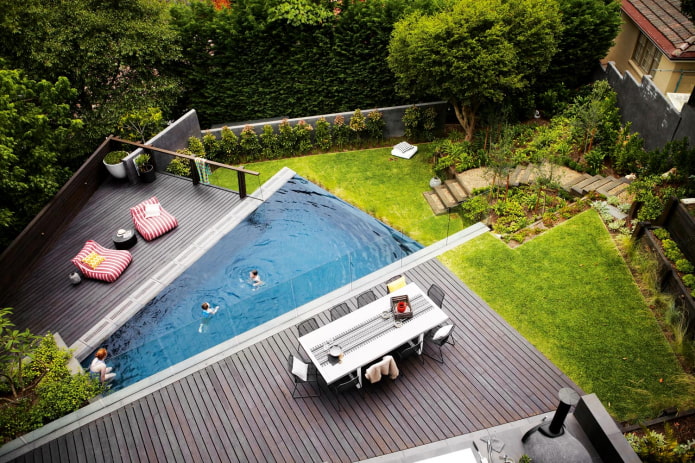
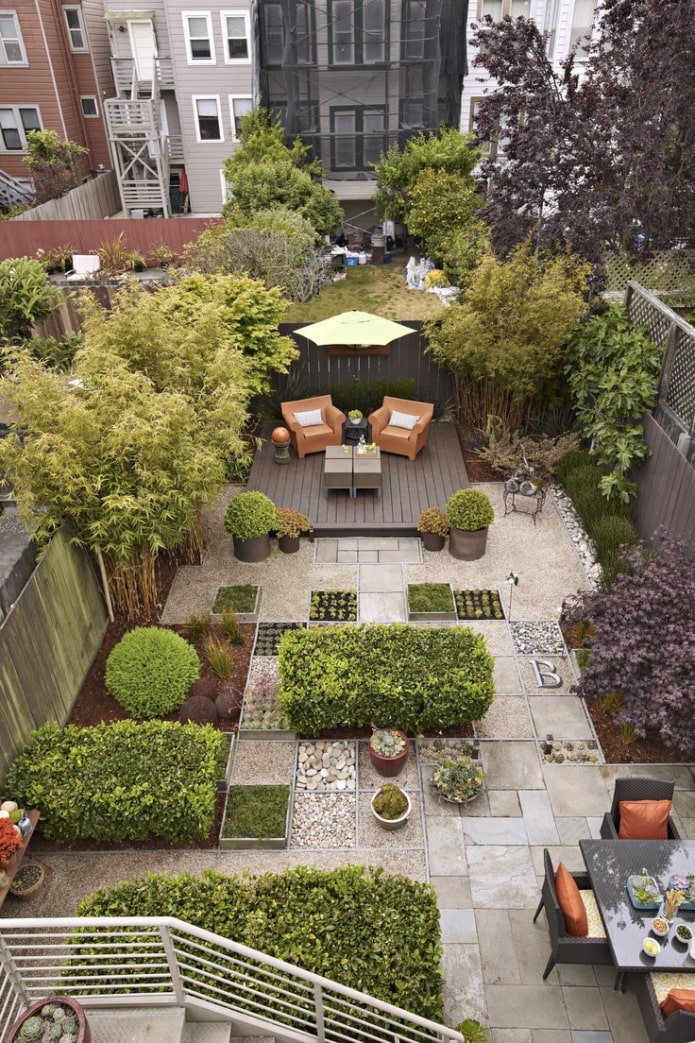
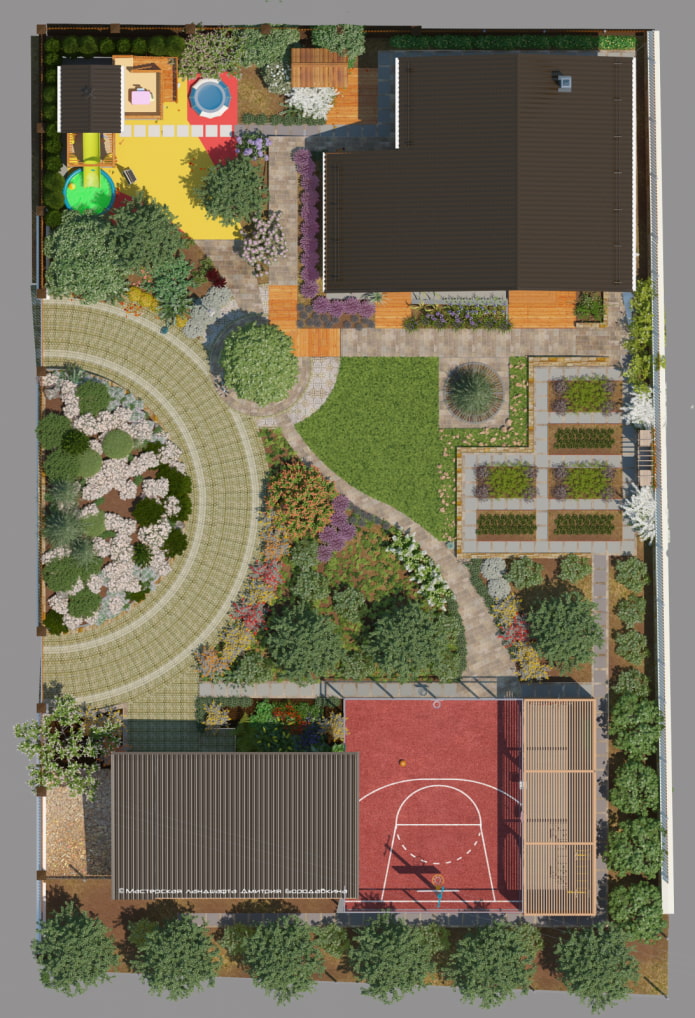
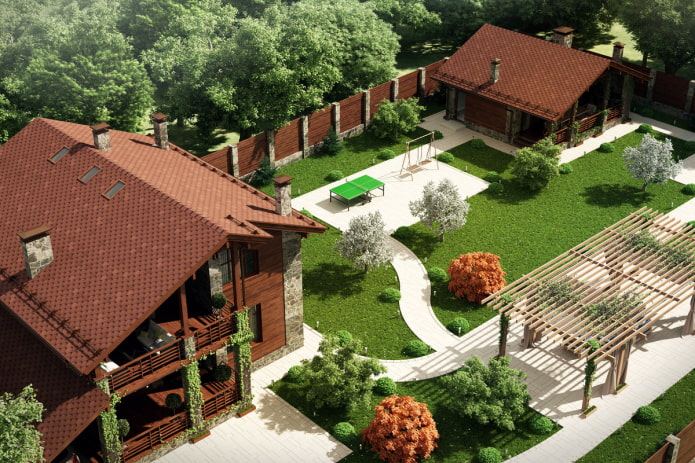

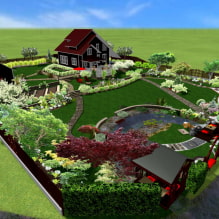
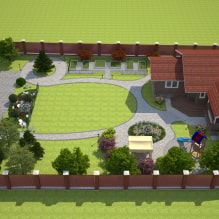

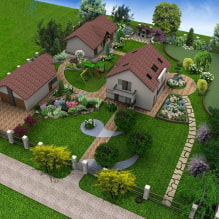
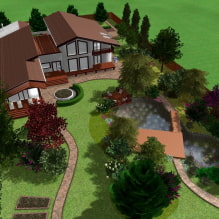
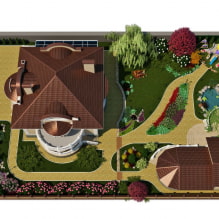
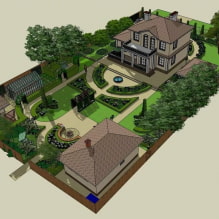
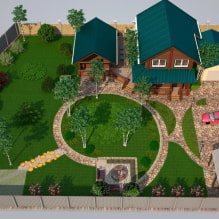

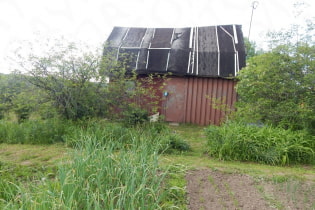 What can you save on when renovating your summer cottage?
What can you save on when renovating your summer cottage? 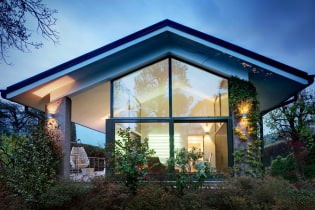 Houses with panoramic windows: 70 best inspiring photos and solutions
Houses with panoramic windows: 70 best inspiring photos and solutions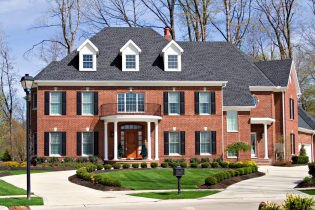 Brick facades of houses: photos, advantages and disadvantages
Brick facades of houses: photos, advantages and disadvantages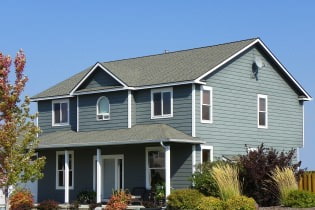 Siding house facades: features, photos
Siding house facades: features, photos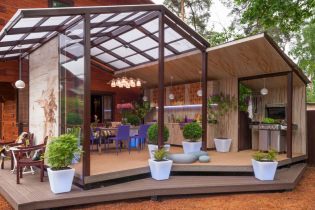 Terrace design in a private house in the Moscow region
Terrace design in a private house in the Moscow region Provence style house design in Moscow region
Provence style house design in Moscow region